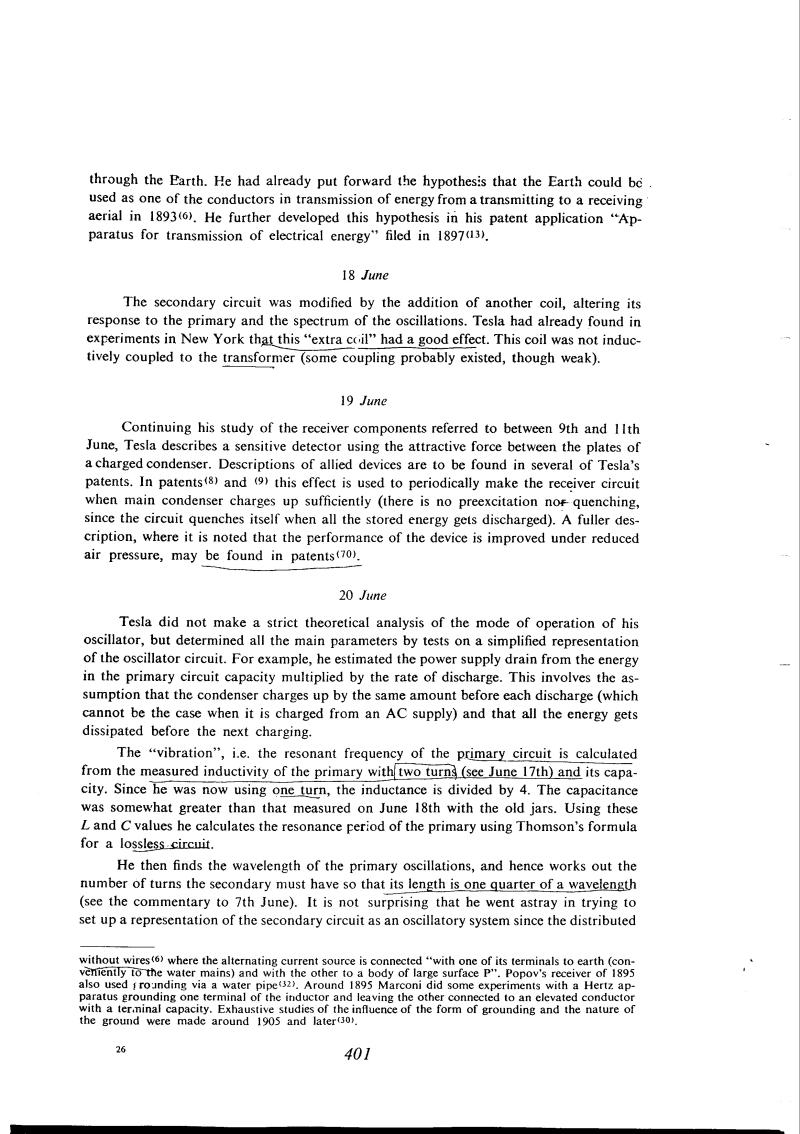
Nikola Tesla Books
without wires(6) where the alternating current source is connected âwith one of its terminals to earth (conveniently to the water mains) and with the other to a body of large surface P''. Popov's receiver of 1895 also used rounding via a water pipe(32). Around 1895 Marconi did some experiments with a Hertz apparatus grounding one terminal of the inductor and leaving the other connected to an elevated conductor with a terminal capacity. Exhaustive studies of the influence of the form of grounding and the nature of the ground were made around 1905 and later(30).
401
Tesla: âOn light and other high frequency phenomenaâ, a lecture delivered before the Franklin Ins. Philadelphia, Febr. 1893, L-107.
Tesla: âMethod of intensifying and utilizing effects transmitted through natural mediaâ, U.S. Patent, 685 953, Nov. 5, 1901, Appl. June 24, 1899, P-297.
Tesla: âMethod of utilizing effects transmitted through natural mediaâ, U.S. Patent 685 954, Nov. 5, 1901, Appl. Aug. 1, 1899, P-303.
Tesla N. âSystem of transmission of electrical energyâ, U.S. Patent 645 576, March 20, 1900, Appl. Sept. 2, 1897.
Tesla: âElectrical transformerâ, U.S. Patent, 593 138, Nov. 2, 1897, Appl. March 20, 1897, P-252
Fleming: p. 792.
Ðопов Ð.С. "ÐÑÐ¸Ð±Ð¾Ñ Ð´Ð»Ñ Ð¾Ð±Ð½Ð°ÑÑÐ¶ÐµÐ½Ð¸Ñ Ð¸ ÑегиÑÑÑиÑÐ¾Ð²Ð°Ð½Ð¸Ñ ÑлекÑÑиÑеÑÐºÐ¸Ñ ÐºÐ¾Ð»ÐµÐ±Ð°Ð½Ð¸Ð¹â, ÐÑÑн. ÑÑÑÑкого Ñиз.-Ñ ÐµÐ¼Ð¸Ñ. о б-ва, 1896, t. 22, 4. ÑизиÑ., оÑд. 1, вÑп. 1.
English: Popov A.S. "A device for detecting and recording electrical oscillations", Journal of the Russian Physical and Chemical Society, 1896, vol. 22, 4. physics, sect.
Tesla: âApparatus for the utilization of radiant energyâ, U.S. Patent 685 957 Nov. 5, 1901, Appl. Mar. 21, 1901, P-343.
âMethod of utilizing radiant energyâ, U.S. Patent 685 958 Nov. 5, 1901, Appl. Mar. 21, 1901. P-348.

